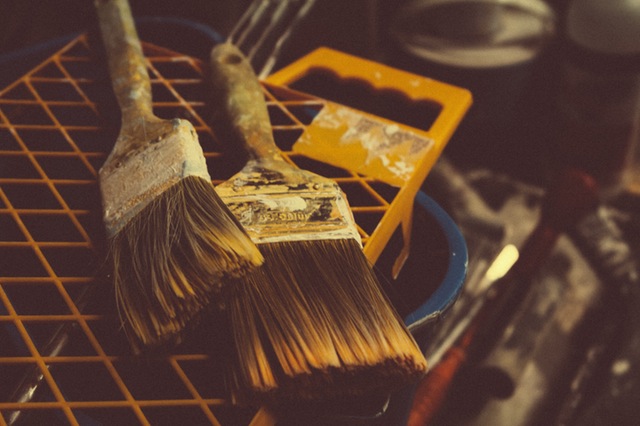How to Paint Denver Pavers

Denver pavers are beautiful on their own, but still, some homeowners prefer to have them painted to create a more customized, unique look. If you’re one of these homeowners and want to try painting over your pavers on your own, make sure you follow these steps carefully:
Clean the pavers thoroughly.
Before you pick up a paintbrush or can of paint, you have to make sure every inch of your pavers are cleaned thoroughly. Every particle of dust and dirt has to be removed, otherwise the paint will not lay evenly and you won’t get the look you desire. First, sweep all the dirt off of the pavers, and then it may be helpful to rinse the area with water afterwards as well. Do not begin painting until the area is thoroughly dry, otherwise the paint will not stick to the surface of the pavers. Learn how to clean pavers here.
Check the forecast.
Because pavers are outside, you won’t be able to protect them from environmental elements, so check the weather forecast before you begin this project. Of course, you will want to avoid any day where rain is in the forecast since this could completely sabotage your paint job. But, you should also try to avoid painting when the weather is below 50 degrees Fahrenheit, as it is best to paint in slightly warmer temperatures.
Add turpentine.
Before you begin applying the paint to the pavers, mix it with turpentine, a substance that will help thin the paint. But, be sure to grab a separate container to mix the paint and turpentine. Why? Only the first coat of paint will need to be mixed with turpentine, so you don’t want to pour it directly into the paint can otherwise you won’t have any paint for the second coat.
If you do use turpentine, make sure you are aware of the safety hazards. This substance is highly flammable, so never use it near an open flame. It is recommended that you only handle turpentine if you are wearing goggles and gloves to avoid making contact with it. Once the paint and turpentine mixture has been applied, it’s not hazardous to be around, but for now, play it safe.
Apply a second coat.
Depending on the look you are going for and the color of paint you are using, you may need to apply two to three coats of paint. After the first coat has been applied, wait for it to dry before you apply the next round. Keep in mind it may take hours for the first coat to dry, so this may turn into an all day event. Also, remember not to mix turpentine with the additional coats of paint. After the first coat, everything else can be applied straight from the can.
Ready to install pavers so you can paint over them? Call AMK Hardscapes, the premier interlocking paving stone installer, for help finding the perfect pavers for your home and garden. Contact us today to get started on your yard’s transformation!
